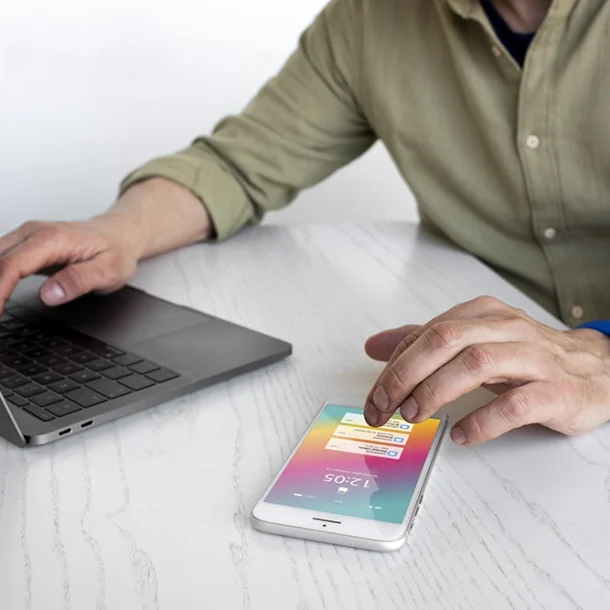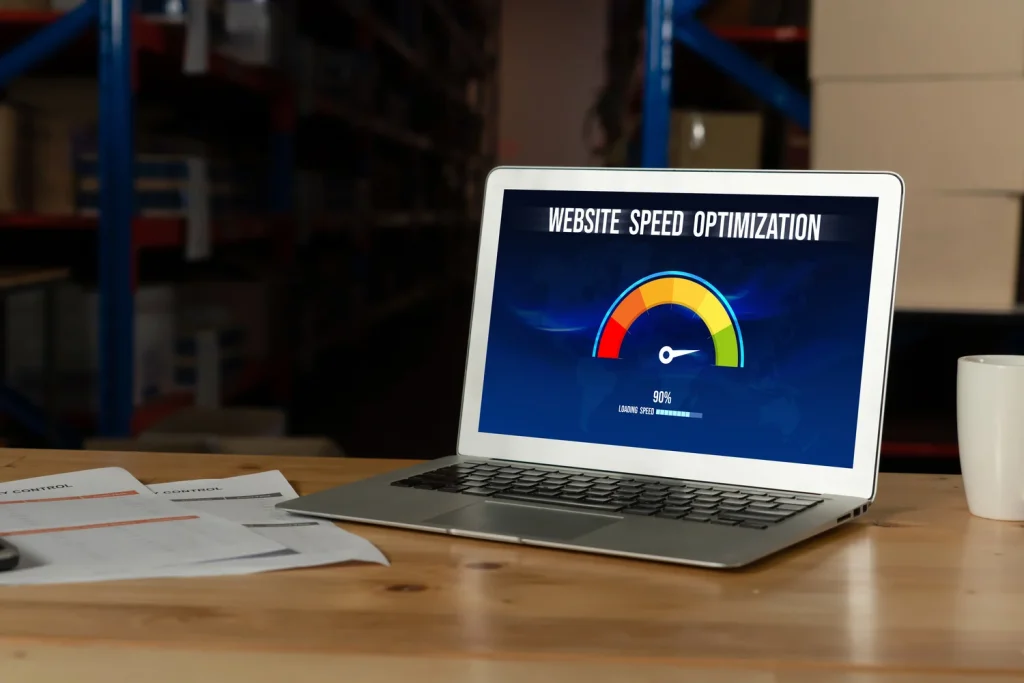
Improve Website Speed & Rankings
Introduction
In today’s digital world, website speed is crucial for both user experience and search engine rankings. At Danabak Digital Marketing Agency, we recognize that a slow-loading site can frustrate users and lead to higher bounce rates. According to Google, 53% of mobile users abandon sites that take longer than three seconds to load.
A fast website not only enhances user engagement but also improves your site’s visibility in search results, as Google includes speed in its ranking algorithms. Danabak Digital Marketing Agency is here to help you optimize your website for speed, ensuring a seamless user experience and better search engine performance. Let us transform your site into a high-performing digital asset that stands out in the competitive online landscape.
In this article, we will look at website speed. We will explore how it affects rankings. We will identify factors that impact website speed. Finally, we will share practical tips to improve your website speed and rankings.
Why is Website Speed Important?
The importance of website speed can be seen in several key areas:
- User Experience: A fast website ensures a smoother experience for users. If pages load quickly, users are more likely to explore additional content and revisit the site in the future.
- Conversion Rates: According to research, even a one-second delay in loading time can lead to a 7% reduction in conversions. Faster websites often result in higher sales and lead generation.
- SEO and Rankings: Google has made it clear that website speed is a ranking factor. The faster your website loads, the better the chances are of ranking higher in search results, which can lead to increased organic traffic.
- Mobile Optimization: With the rise of mobile browsing, having a fast website is even more crucial. Mobile users are particularly sensitive to loading times, so optimizing speed for mobile devices can significantly impact overall performance.
Understanding these aspects of website speed will help you see why enhancing it is essential for your website’s success.

How Website Speed Affects Rankings
Google’s Algorithm and Page Speed
Google has made it clear that page speed is a significant ranking factor in its search algorithms. This means that the faster your website loads, the better your chances are of ranking higher in search results. Google introduced Core Web Vitals, which are specific metrics that focus on the user experience associated with speed, responsiveness, and visual stability. These metrics include:
- Largest Contentful Paint (LCP): Measures loading performance. Ideally, LCP should occur within 2.5 seconds of when the page first starts loading.
- First Input Delay (FID): Measures interactivity. A good FID is less than 100 milliseconds, ensuring that users can interact with the page quickly.
- Cumulative Layout Shift (CLS): Measures visual stability. A CLS score of less than 0.1 indicates a stable page that doesn’t shift as it loads.
These metrics have become critical benchmarks for webmasters and SEO specialists, as they directly impact both user experience and search engine rankings.
User Experience and Engagement Metrics
Website speed influences not only ranking but also user engagement metrics. Here’s how:
- Bounce Rate: This metric shows the percentage of visitors who leave your site after viewing only one page. A slow-loading site can significantly increase the bounce rate, as users are less likely to wait for content to load.
- Dwell Time: This is the amount of time a user spends on your site before returning to the search results. Faster-loading pages tend to keep users engaged longer, which can positively influence rankings.
- Click-Through Rate (CTR): A well-optimized, fast website often results in higher CTRs from search results, as users are more likely to click on links leading to sites that load quickly.
In summary, website speed has a profound impact on how users interact with your site, and these interactions can influence your search engine rankings. By optimizing for speed, you not only enhance user experience but also improve the likelihood of achieving higher rankings on search engines.
Factors Affecting Website Speed
1. Hosting Environment
The foundation of your website’s speed starts with your hosting environment. Choosing the right web hosting service can significantly affect load times. Here are some common types of hosting:
- Shared Hosting: A cost-effective option where multiple websites share the same server resources. While it’s affordable, it can lead to slower speeds, especially during peak traffic times.
- Virtual Private Server (VPS): Offers dedicated resources within a shared server environment, providing better performance than shared hosting.
- Dedicated Server: Provides an entire server for your website, ensuring maximum speed and performance but at a higher cost.
- Cloud Hosting: Distributes resources across a network of servers, allowing for scalability and often improved load times.
Selecting the appropriate hosting solution is crucial, as it can make a significant difference in your website’s speed and overall performance.
2. Website Design and Code Quality
The design and structure of your website can impact its speed. Here are some elements to consider:
- Minimizing HTTP Requests: Each element on a page (images, scripts, CSS files) makes individual HTTP requests. Reducing the number of elements on a page can minimize these requests, speeding up load times.
- Optimizing Code: Clean, efficient code can enhance performance. Minifying CSS, JavaScript, and HTML files reduces their size and improves load times.
- Responsive Design: Ensure that your website is optimized for various devices. A mobile-friendly design can significantly improve load times for mobile users.
3. Image and Media Optimization
Large images and media files can dramatically slow down a website. Here’s how to optimize them:
- Compression: Use tools to compress images without sacrificing quality. Formats like JPEG and WebP can provide good quality at lower file sizes.
- Lazy Loading: Implement lazy loading for images and videos, which means they will only load when they come into the viewport, saving bandwidth and speeding up initial load times.
4. Browser Caching
Browser caching allows users’ browsers to store certain elements of your site so that they don’t have to be downloaded again on subsequent visits. By setting appropriate caching headers, you can significantly improve load times for returning visitors. Here are some tips:
- Set Cache-Control Headers: These tell the browser how long to store cached items.
- Leverage Browser Caching: Use caching plugins if you’re on a CMS like WordPress to help handle this process automatically.
5. Content Delivery Network (CDN)
A Content Delivery Network (CDN) is a network of servers distributed across various locations worldwide. When users access your website, a CDN serves the content from the server nearest to them, reducing latency and improving load times. Key benefits include:
- Reduced Load Times: By serving content from a nearby location, CDNs minimize the distance data must travel.
- Increased Reliability: CDNs can handle high traffic loads, reducing the chances of your site going down during peak times.
In summary, several factors can impact your website speed, from the hosting environment to media optimization and caching strategies. Understanding these elements will help you take the necessary steps to improve your site’s performance.

Strategies for Improving Website Speed
1. Optimize Images and Media
Images can account for a significant portion of a webpage’s load time. Here are some strategies to optimize them:
- Compression: Use image compression tools like TinyPNG or ImageOptim to reduce file size without sacrificing quality. Aim for formats like JPEG for photos and PNG for images with transparency.
- Responsive Images: Implement responsive image techniques using the srcset attribute in HTML, which allows the browser to select the appropriate image size based on the user’s device.
- Lazy Loading: Use lazy loading for images and videos, so they only load as users scroll down the page. This reduces initial load times and improves the user experience.
2. Minimize HTTP Requests
Reducing the number of HTTP requests can significantly speed up your website. Here are a few tips:
- Combine Files: Merge CSS and JavaScript files to reduce the number of requests. For example, instead of linking multiple CSS files, combine them into one.
- Use CSS Sprites: Combine multiple images into a single image file (sprite) to reduce the number of requests for images.
- Eliminate Unused Plugins: If you’re using a CMS like WordPress, deactivate and remove any unnecessary plugins that can add extra requests.
3. Implement Caching
Caching can dramatically improve your website’s speed. Here’s how to implement effective caching:
- Browser Caching: Set appropriate caching headers to instruct browsers to store certain resources for future visits.
- Server-Side Caching: Use caching mechanisms such as Varnish or Redis to store frequently accessed data in memory, reducing load times for dynamic content.
- Content Delivery Network (CDN): As mentioned earlier, using a CDN can distribute cached content across various locations, speeding up access.
4. Minify CSS, JavaScript, and HTML
Minification reduces file sizes by removing unnecessary characters, comments, and whitespace in your code. Here are steps to follow:
- Use Minification Tools: Tools like CSSNano, UglifyJS, and HTMLMinifier can help automate the minification process.
- Combine Files: As previously mentioned, combining files can also help reduce the overall size and number of requests.
5. Optimize Server Performance
Your server plays a pivotal role in your site’s speed. Here are some optimization techniques:
- Choose the Right Hosting Plan: Consider upgrading to VPS or dedicated hosting if you experience high traffic.
- Use HTTP/2: HTTP/2 improves loading speed through multiplexing, allowing multiple requests to be sent simultaneously over a single connection.
- Reduce Server Response Time: Monitor your server’s response time and optimize backend processes, such as database queries and server-side scripts, to ensure quick responses.
6. Monitor Performance Regularly
Regular monitoring helps you stay on top of your website’s performance. Use tools like:
- Google PageSpeed Insights: Provides insights and suggestions for improving speed.
- GTmetrix: Offers detailed reports on loading times and performance metrics.
- WebPageTest: Allows you to test your site from various locations and browsers.
By implementing these strategies, you can significantly enhance your website’s speed, leading to improved user experience, better engagement, and higher search engine rankings.

Tools for Measuring Website Speed
1. Google PageSpeed Insights
Google PageSpeed Insights is a free tool that analyzes the content of a web page and provides suggestions to improve speed. It scores your website on a scale from 0 to 100, with higher scores indicating better performance. Key features include:
- Lab Data: Provides detailed metrics like First Contentful Paint (FCP) and Largest Contentful Paint (LCP).
- Field Data: Shows real-world performance data from actual users.
- Recommendations: Offers actionable suggestions for optimization, such as image compression and resource minification.
2. GTmetrix
GTmetrix offers a comprehensive analysis of your website’s speed and performance. It combines data from Google Lighthouse and WebPageTest, providing insights into:
- Page Load Time: Detailed breakdown of loading time for each element on the page.
- Waterfall Chart: Visual representation of how each request is processed.
- Performance Scores: Scores based on various metrics, including PageSpeed and YSlow.
- Recommendations: Specific improvement suggestions to enhance speed.
3. WebPageTest
WebPageTest is an advanced tool that allows users to test their website speed from multiple locations and browsers. Key features include:
- Multiple Testing Locations: Choose from various geographical locations to test how speed varies globally.
- Detailed Reports: Provides in-depth reports, including a waterfall chart, visual snapshots, and optimization checks.
- Customizable Settings: Users can adjust settings such as connection speed, browser type, and more for tailored testing.
4. Pingdom
Pingdom is a user-friendly tool that helps monitor website performance and uptime. Features include:
- Performance Grade: A score based on various speed metrics.
- Load Time Analysis: Detailed insights into how long each element takes to load.
- Uptime Monitoring: Tracks website availability and alerts you if downtime occurs.
5. Lighthouse
Lighthouse is an open-source, automated tool for improving the quality of web pages. It can be run from Chrome DevTools, the command line, or as a Node module. Key aspects include:
- Performance Audits: Provides audits for performance, accessibility, SEO, and best practices.
- Detailed Metrics: Offers insights into metrics like Time to First Byte (TTFB) and First Input Delay (FID).
- Progressive Web App (PWA) Checks: Evaluates your site for PWA compliance.
6. Google Search Console
Google Search Console provides valuable insights into how your website is performing in Google search results. It includes:
- Core Web Vitals Report: Shows the performance of your pages based on user experience metrics (LCP, FID, CLS).
- Mobile Usability Report: Identifies issues affecting mobile users, such as loading speed and usability.
Conclusion
By utilizing these tools, you can effectively measure your website’s speed, identify bottlenecks, and implement necessary optimizations. Regular monitoring and assessment of performance metrics will help ensure that your website remains fast, user-friendly, and competitive in search engine rankings.

Best Practices for Maintaining Website Speed
1. Regularly Update Software
Keeping your website’s software up to date is crucial for maintaining optimal performance. This includes:
- Content Management Systems (CMS): Regular updates to platforms like WordPress, Joomla, or Drupal often include performance improvements and security patches.
- Plugins and Themes: Outdated plugins or themes can slow down your site or introduce vulnerabilities. Regularly review and update them, removing any that are unnecessary.
2. Optimize Database
Over time, databases can become cluttered with unnecessary data, which can slow down your website. Here are some optimization tips:
- Regular Cleanup: Remove old posts, spam comments, and unused tags or categories.
- Database Optimization Plugins: Use tools like WP-Optimize (for WordPress) to automate the cleanup and optimization process.
- Limit Revisions: For WordPress sites, limit the number of post revisions saved in the database to reduce bloat.
3. Monitor and Analyze Performance
Continuous monitoring helps you stay informed about your website’s speed and performance. Consider these practices:
- Set Up Alerts: Use monitoring tools to receive alerts for downtime or significant performance drops.
- Regular Testing: Schedule regular performance tests using the tools mentioned earlier (e.g., GTmetrix, Google PageSpeed Insights).
- Review Analytics: Use Google Analytics to understand user behavior, such as bounce rates and page load times.
4. Use a Reliable CDN
If you haven’t already, consider implementing a Content Delivery Network (CDN). Benefits include:
- Speed Improvement: A CDN caches your website content across multiple servers worldwide, reducing latency for users accessing your site from different locations.
- Load Balancing: Distributes traffic across multiple servers, preventing any single server from becoming overwhelmed during peak traffic times.
5. Optimize Third-Party Scripts
Third-party scripts (e.g., ads, social media widgets) can impact loading speed. To manage them effectively:
- Asynchronous Loading: Load third-party scripts asynchronously so they don’t block the rendering of the main content.
- Limit Usage: Only include essential third-party scripts to minimize their impact on performance.
6. Implement Gzip Compression
Gzip compression reduces the size of your HTML, CSS, and JavaScript files, which can speed up loading times. Here’s how to implement it:
- Server Configuration: Enable Gzip compression through your server configuration (e.g., in .htaccess for Apache servers).
- Use Plugins: For CMS platforms like WordPress, consider using plugins such as WP Super Cache or W3 Total Cache, which can automatically enable Gzip compression.
7. Review Hosting Plan Periodically
As your website grows, your hosting plan may need to change. Regularly assess your hosting performance and consider upgrading if:
- Traffic Increases: If you notice a significant rise in traffic, it may be time to switch to VPS or dedicated hosting.
- Performance Issues: If users report slow loading times consistently, it may be an indicator that your current hosting environment is insufficient.
Conclusion
Maintaining website speed is an ongoing process that requires regular attention and updates. By implementing these best practices, you can ensure that your website remains fast and optimized for user experience, ultimately benefiting your SEO and conversion rates.
Conclusion
Website speed is a critical factor that influences user experience, search engine rankings, and overall site performance. Here’s a summary of the key points covered:
- Understanding Website Speed: Website speed refers to how quickly a page loads, impacting user satisfaction and engagement.
- Impact on Rankings: Google considers page speed a ranking factor, with Core Web Vitals being essential metrics for evaluating user experience.
- Factors Affecting Speed: Elements such as hosting environment, website design, media optimization, and server performance all play a role in determining speed.
- Strategies for Improvement: Optimizing images, minimizing HTTP requests, implementing caching, and using CDNs are effective strategies to enhance website speed.
- Tools for Measurement: Tools like Google PageSpeed Insights, GTmetrix, and WebPageTest help in analyzing speed and identifying areas for improvement.
- Best Practices for Maintenance: Regular updates, database optimization, continuous monitoring, and a reliable hosting plan contribute to sustained website performance.
Final Thoughts
In today’s digital landscape, a fast website is not just a luxury; it’s a necessity. Users expect quick and seamless experiences, and search engines reward sites that deliver them. By prioritizing website speed, you can significantly enhance user satisfaction, improve engagement metrics, and achieve better rankings on search engines.
Ready to take your website speed to the next level? Contact Danabak Digital Marketing Agency today to learn how we can transform your site into a top-performing asset that delivers exceptional results.









